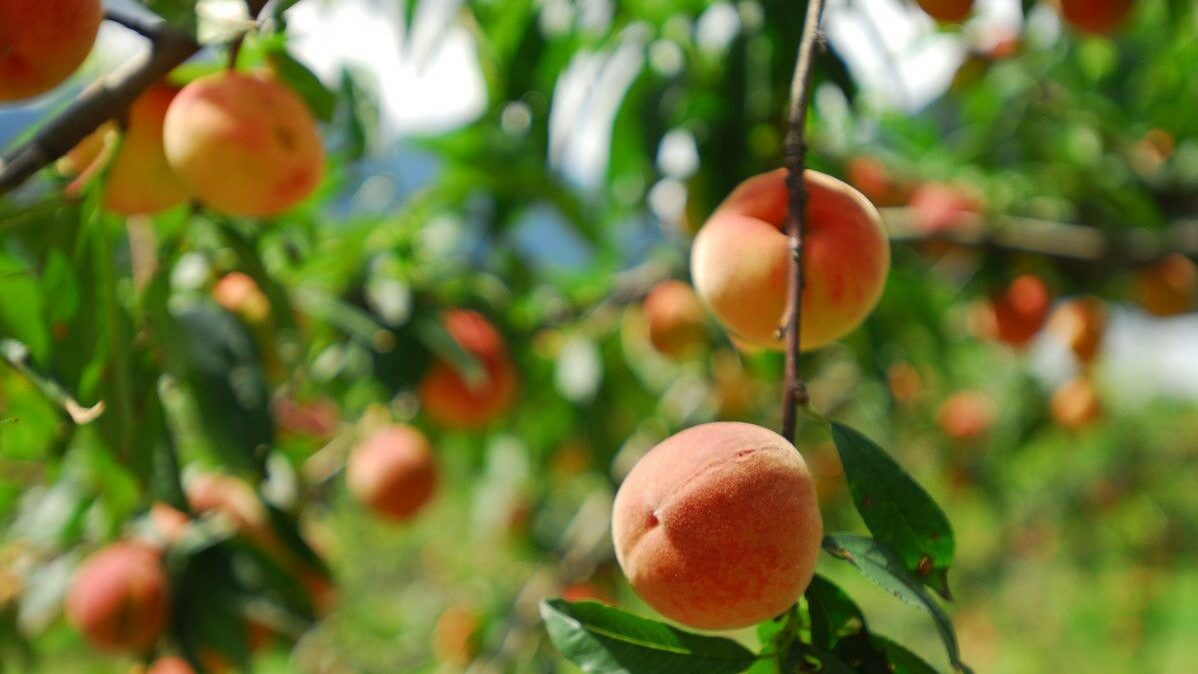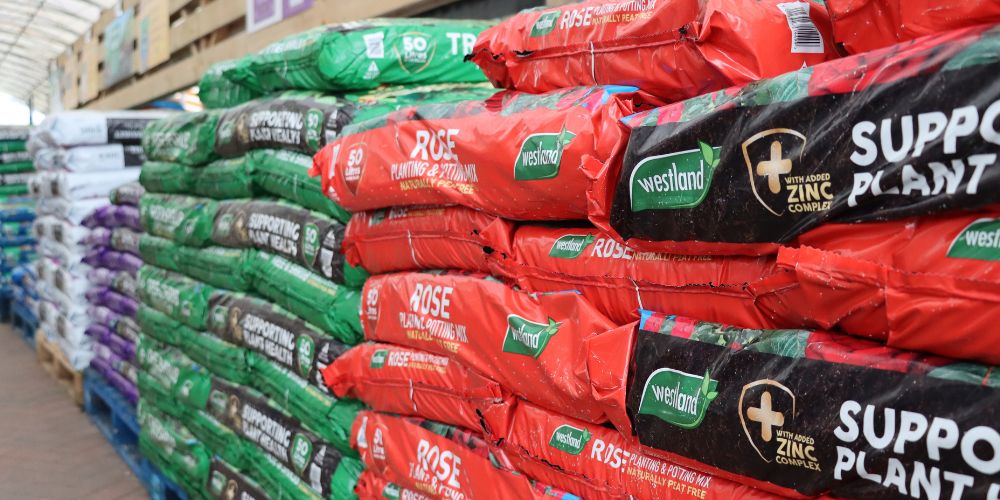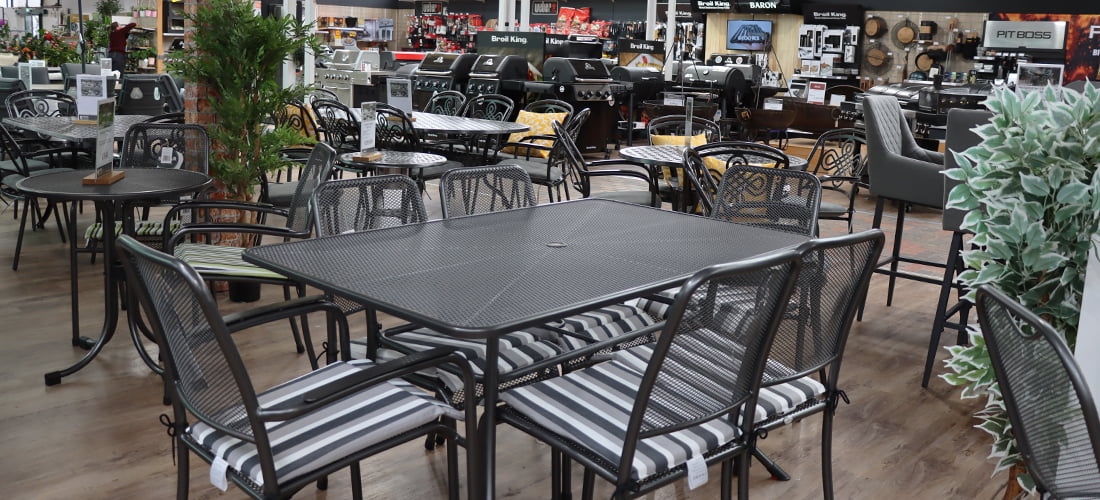POSITION
Don’t plant a fruit tree where the same type of tree has grown before
A warm, sheltered sunny spot, with deep soil for sweet cherries. If it is too cool they will produce poor quality fruit and they tend to be short-lived in shallow soil. Acid cherries are less fussy.
Figs like lots of sun and shelter, preferably being trained on a south or west-facing wall (see ‘Building a fig pit‘). They are also happy in a greenhouse or grown in a large container and kept frost-free.
Peaches tend to blossom very early and therefore need to be trained on a south facing wall or kept in a very sheltered area. Container plants are easy to protect from frost, or grow in a cool greenhouse. They don’t like chalky soil.
Plums like it warm, sheltered and relatively frost-free, not too chalky or sandy.
Always plant in the best possible position, this will ensure you have a healthy, long-lived tree. Weed the area thoroughly beforehand, and if your soil is shallow or chalky dig in lots of compost a few weeks before planting.
GENERAL CARE
Sweet cherries should be mulched in spring but should only need feeding if the soil is poor. Acid cherries will benefit from feeding in the spring. Protect the blossom from frost. Water regularly if dry. There is no need to thin the fruits, but do protect them from birds.
Figs in open ground will need mulching in spring, but not feeding. Feed container grown plants but not too much or you will get too much leafy growth. Water well when hot. Protect embryo figs from frost with straw. (Embryo figs are small pea sized fruit that are on the tree in September, these will be next years figs).
To protect from peach leaf curl, they should be kept under cover (polythene or glass) from early Jan. until mid-spring. Protect the blossom from frost. Mulch in spring after feeding with a gen. purpose fertiliser. Water well when dry. Protect the buds and fruit from birds. Water well in dry spells (esp. wall-trained trees) Thin fruit when hazelnut size to 1 per cluster and when walnut size to 22cm apart.
Feed Plums in the spring with a general purpose fertiliser and mulch. Protect the buds ad fruit from birds. Water well in dry spells (esp. wall-trained trees). Thin after fruit drop to about 7.5cm apart using scissors.
ROOTSTOCKS
Cherries tend to be grown on Colt rootstock. Figs are grown on their own roots.
Peaches are mainly grown on St Julien A or Brompton. Both will reach a height of about 3.8m.Terrace peaches are grown on Peach seedling rootstock and the variety is often a genetic dwarf.
Plums are grown on either Pixy (2.2m), St Julien A (4m), Brompton (4.5m ) or Myrobalan (4.5m).
POLLINATION
Most sweet cherries need a pollination partner. Acid cherries are less likely to, but do check when buying as some need a particular tree. Stella, Morello, Nabella and Sunburst are self-fertile.
Figs are self-fertile and do not need a pollination partner or hand pollinating.
Most peaches are self-fertile but as they flower very early in the year when there are few insects around they frequently need hand pollination (see the Fruit Tree Calendar).
Some plums are self-fertile and some need a pollinator. It can be easier to buy one the self-fertile ones like Victoria or Czar. However if you have a pollinator present the crop will be more consistent and heavier. It is possible that plums may need some hand pollination.
Most fruit trees will produce a better crop with a pollinator present even if they are self-fertile.
PRUNING SHAPES
Cherries tend to be grown as either bushes or fans. The advantage of fans is that they are easily protected from birds. A south facing wall will stay warmer for longer.
Figs are also mainly grown as bushes or fans, or in containers. If grown in the open ground they can get a little out of control and produce mainly leafy growth so the roots will need to be restricted (see below).
Peaches are best trained on a wall as a fan, grown in a container or grown under glass. This means that they will receive the maximum warmth and protection, and will also make hand pollination and protection from frost and peach leaf curl a lot easier.
Plums are also grown mainly as bushes or fans, for similar reasons.
PRUNING MAINTENANCE
On all types of fruit the most important pruning is to remove all dead, diseased or damaged wood. This will keep your tree healthy. Then remove any that will spoil the shape or cross the centre of the tree.
Cherries must be pruned in the summer to avoid infection with silver leaf. Sweet cherries produce their fruit on 2yr old or older wood so pruning aims to restrict leafy growth. Acid cherries fruit on 1 yr old wood so pruning is done to remove old wood and encourage new growth. With a bush this means cutting out a 1/4 of old growth each spring – cut back to a shoot that will grow to replace the one you have removed. With a fan, remove badly placed shoots in spring and thin the remaining ones to about 10cm apart. These should be tied in as they grow. 1 or 2 new shoots should be retained low down on the fruiting shoot as they will replace it after the harvest when the fruiting shoot is cut out.
Bush-trained or container-grown figs should just be pruned to remove crowded, crossing or damaged wood. The most important thing to remember is to keep the centre of the bush open, so prune to a shoot that faces outwards. Fan-trained trees need to be cut back in early spring to remove old fruited wood and frost damaged wood and tie in new shoots as appropriate. At mid-summer pinch out the tips of the shoots to 5 leaves, the embryo figs should develop on these shoots.
Peaches produce fruit only on shoots produced the previous year. Therefore they are pruned to encourage new growth and maintain the framework of the tree. They should be pruned in early spring as they are also subject to silver leaf. At the base of each flowered shoot there should be 2 growth buds or shoots – remove the less well placed one. Also leave a shoot a little above the first one. One of these shoots will grow to take over from the currently flowering one (the other is there just in case the 1st one is damaged) once the fruit has been picked, cut the fruited shoot back and tie in the new one to take its place. This ensure that the whole framework is renewed with new wood. Plums should also be pruned in the summer because of silver leaf.
Plums fruit on the base of 1yr old shoots as well as 2yr old and older wood, so pruning is mainly aimed at maintaining the framework. On established fans in spring remove any shoots growing in the wrong direction (ie to the middle of the fan), after fruiting shorten side shoots to 3 leaves. With bushes, prune to maintain the shape.
CONTAINER
Most plants can be grown in a container, but bear in mind that the fruit yield may be considerably lower and the plant more difficult to care for. Use a large container or barrel and a loam based compost like John Innes no 3.
Cherries can be grown in containers as patio plants and are more easily protected from birds. The variety to use would be Stella on Colt rootstock. They will have to be more carefully watered and fed.
Figs are ideal to grow in containers as they can be protected from the frost more easily and the container restricts their root growth. Grow in a good loam based compost and repot each year. They do benefit from root pruning when being repotted.
Peaches are also good for containers if you buy a patio or terrace type, these need little or no pruning and are easy to pollinate and protect from frost and peach leaf curl.
Plums are not generally grown in containers.
PESTS
Birds eat buds in spring and fruit in summer. The only real protection is to net the trees. This can be impossible if your tree is large and is often the reason that people buy dwarf trees.
Cherry Blackfly distort leaves at the tips of branches, and leaves are often sticky and blackened. If you look carefully you will find the aphids, and possibly also the ants that farm them. Spray from bud burst onwards to control – removing nearby ants nests may help a little.
Greenfly curl leaves or distort growth, green aphids visible near the growing tips. Spray from bud burst to control.
Red Spider Mite can be a problem when hot and dry or on fruit indoors – the leaves will have a mottled look and tiny mites will be found on the underside of leaves. Spray with an appropriate insecticide.
Sawfly eggs are laid in the immature fruit and the grub eats its way out – spray at petal fall if it is a problem. Wasps eat the fruit and clear up windfalls and rotting fruit. Destroying nearby wasps nests may help, but should be done professionally.
DISEASES
Bacterial Cankers cause gum-oozing spots, which later become hole. Shoots will die back. Cut out infected areas and follow the spraying programme in the Fruit Tree Calendar.
Brown Rot turns fruit brown with rings of yellowy mould, fruit will hang on the tree rather than falling off. Remove and destroy affected fruit immediately.
Canker causes shrunken and cracked bark with red growths in winter. Cut out all infected areas and follow the spraying programme. It often enters through a wound in the bark so take care not to damage your tree unnecessarily.
Coral Spot causes pink spots which spread from dead to live wood. Cut out, and remove all dead wood for the area.
Grey Mould causes a soft decay of plant tissues accompanied by a growth of fuzzy grey-brown mould. Remove infected parts and spray with fungicide. It favours humid conditions, so try to allow more ventilation.
Peach Leaf Curl causes severely distorted leaves, making them fall prematurely. Follow the spraying programme and cover the plant in early spring if it appears. Remove and burn all affected leaves.
Silver Leaf is a fungal disease which infects the wood through wounds, causing a silvering of the leaves followed by death of the branch. Cut out all infected wood, never prune in winter and try not to let the bark become damaged to let any infection in.
REASONS FOR TREE NOT FRUITING
Tree not old enough – most trees take a few years to reach fruiting age. It is best not to let them fruit in the first year after planting or it may over-tire it and affect fruit production for its whole life.
Poor pruning/planting – it is important to plant the tree carefully in the right position so that it is healthy. It is also important to prune properly; too much and the tree will produce a lot of green growth and few fruit, too little and it will become tangled and unhealthy. Prune in the wrong place and you may cut off next years fruit buds!
Frost – A frost on the blossom may drastically reduce the amount of fruit that is produced try covering with fleece at night if you have this problem.
Poor feeding – if you overfeed you will get leaves at the expense of fruit, and if you underfeed you will have very little fruit. Rake in some general fertiliser every spring.








